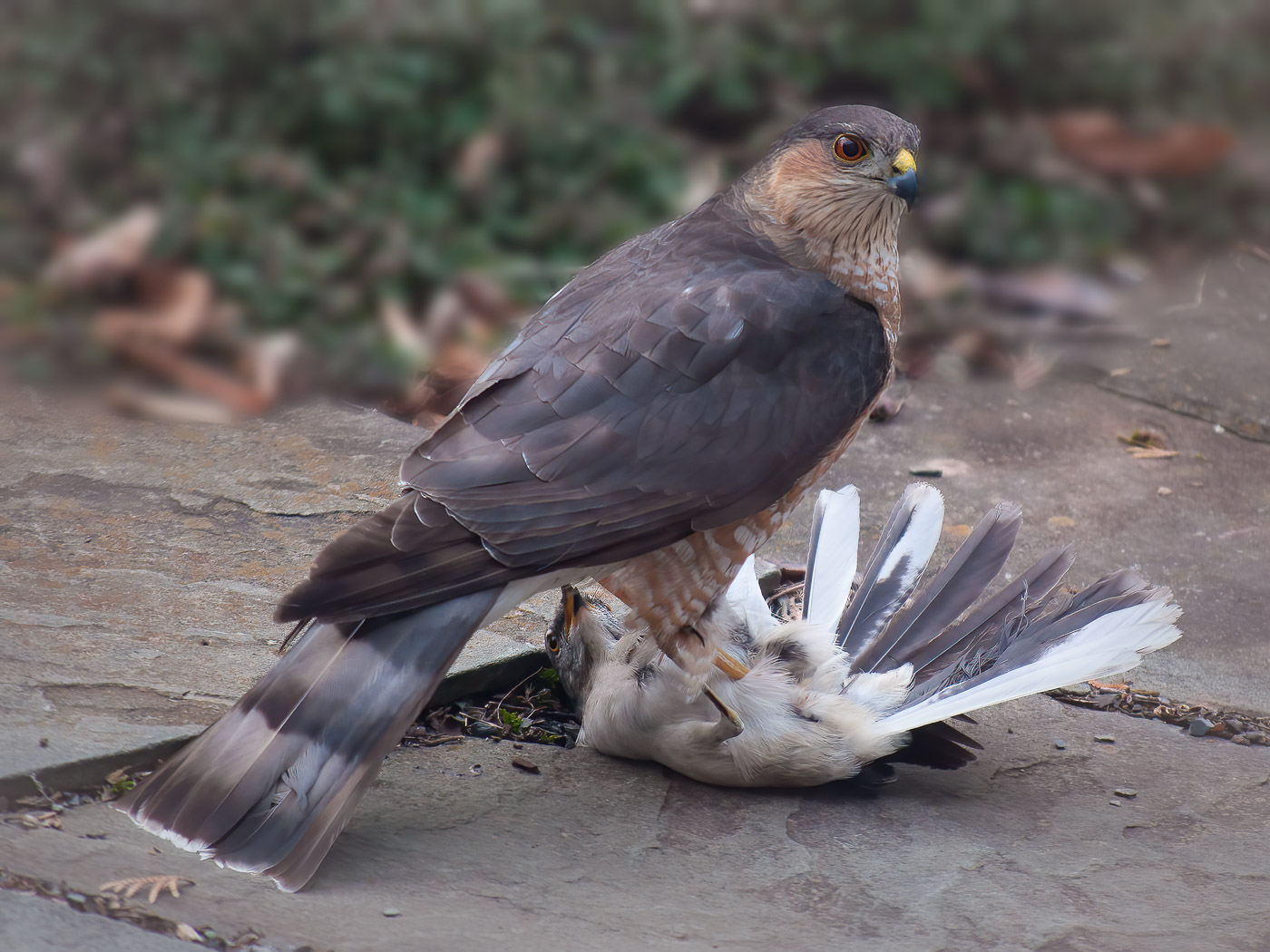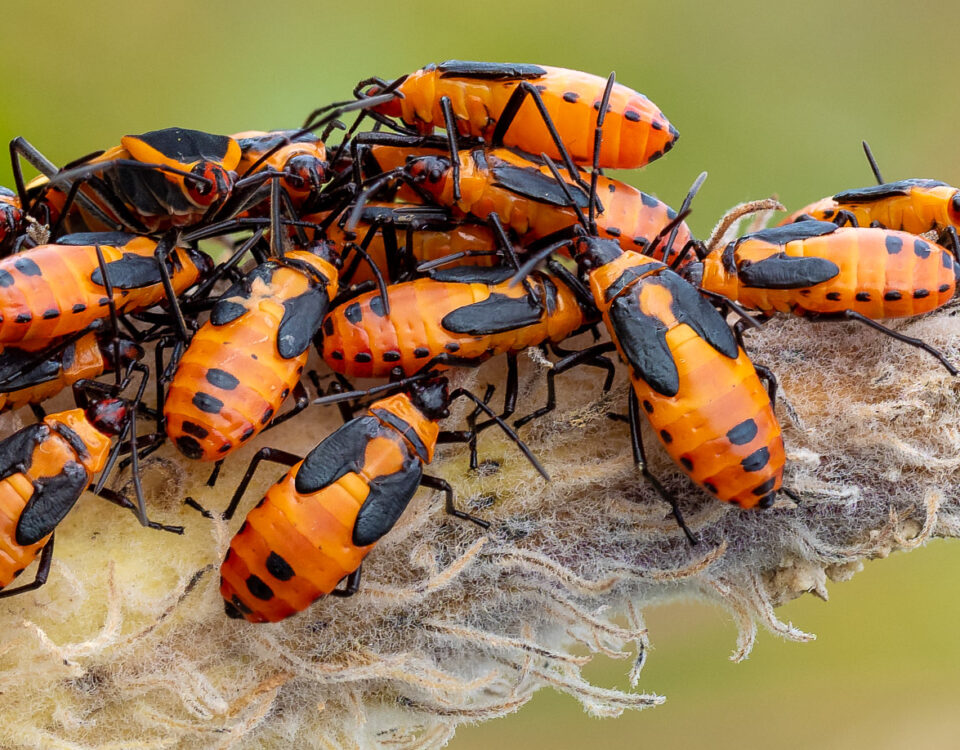Why Plant Winterberry Holly?

Leave the Leaves
October 31, 2020
Beetles as Pollinators
January 14, 2021Winterberry Holly is a great native shrub that gets well deserved landscape attention because of its gorgeous heavy red fruit set during (guess?) – winter! Aside from being ornamentally attractive, it’s also a great plant for wildlife that live in your yard. Winterberry is used by wildlife for food and protection (especially birds) and is a pollinator powerhouse for small insects for a brief intense period during flowering.
The gorgeous seasonal berries are the result of a season-long process starting with small white flowers that attract pollinators in late spring. Then as the flowers fade, green berries emerge and develop throughout the summer. The berries start to turn red in late August and finally become deep red and highly noticeable once the deciduous leaves fall. Learn more about Common Winterberry Holly (Ilex verticillata) as a landscape plant and how to get berries to form below.
Berry Formation and Wildlife Slideshow
Click on an image to activate a slideshow with titles and captions.
Winterberry for wildlife
Birds use the dense branching of Winterberry for cover year-round. Sometimes they just hang out (like catbirds in the summer). Other times they dive in to evade hawks. We have seen sparrows, catbirds, cardinals, juncos, chickadees, titmice, woodpeckers, wrens, and more I’m forgetting, use this shrub. A small covey of mourning doves roost under ours during winter afternoons.
Then there are the berries. They’re eaten by birds, but inconsistently, and not usually until early winter. That leaves the berries for our visual enjoyment for a while. A few insects like native stink bugs use the berries too. Equally important for us is that the deer mostly ignore the plants.
Small pollinating insects visit Winterberry in large numbers when it’s blooming in late spring. But you won’t notice the flowers or insects unless you look closely. It’s worth watching – there are so many different types of pollinators to see! And of course, there are also predators looking for a meal. At other times, you may find caterpillars or leaf hoppers.
Winterberry Flower Wildlife Slideshow
Click on an image to activate a slideshow with titles and captions.
Our experience with birds and berries.
We have two patches of Winterberry Holly cultivars - Red Sprite (dwarf form) and Winter Red (upright form). Each patch is 5 plants with one male. Red Sprite blooms a little earlier, and maybe because of that, the fruit set is occasionally reduced and this year failed during a late cold snap. Despite that, the birds routinely eat Red Sprite fruit by spring. Our more reliable berry set on Winter Red gets far less attention from the birds. This difference might be due to location though and not the cultivars at all.
Attracting a Bird Bully – the Mockingbird
Mockingbirds are fruit eaters and will defend a highly reliable food source. Most years, we have a mockingbird “declare” the berries and relentlessly go after any bird coming close to the shrubs. It doesn’t matter that other birds just want the sunflower at our feeder – the mockingbird chases them off. Especially the cardinals. Does the strategy work? Based on our observations – absolutely! In years when there is a tireless mockingbird, it will stick around and eat ITS berries into spring. One year, a particularly aggressive mockingbird even defended its berries against a passing Sharp-shinned hawk – unsuccessfully. Within a couple of days, the berries were stripped!

These 3 male bluebirds feeding on Red Sprite berries are a colorful winter treat.

This Mockingbird tried unsuccessfully to get the Sharp-shinned Hawk to leave its territory of Winterberry.
Winterberry as a landscape plant
Winterberry holly (Ilex verticillata) are highly useful landscape plants aside from their ornamental and wildlife value. They exhibit reliable, predictable, and attractive form. Winterberry are best planted in a small mass as root suckers fill in the spaces between plants supporting denser growth. They don’t grow overly fast or slow, and don’t get super leggy. While they prefer moist soil and even soggy acidic locations, they are adaptable and tolerate drier locations. In addition to straight species plants, there are cultivars that vary in form (taller upright and dwarf) that are useful for residential, commercial and natural landscapes. Just a few plants will cover a good chunk of space, but are small enough for suburban yards.
How to get berries
Winterberry are more complicated than buying one and putting it in the ground. And you do want them to set fruit! They are dioecious plants meaning there are separate “male” and “female” plants. Only the flowers on the female develop fruit, and those only fruit if a male is nearby. Why? Because insects have to carry pollen from the male flowers to the female flowers for successful pollination. To get berries:
- Confirm you have selected female plants and note the cultivar.
- Select at least one male plant and confirm that it blooms at the same time as your females. Experts in the trade can help you. Plant males reasonably close to the females.
- Now you need to rely on insects to pollinate the flowers. You can support pollinators by using less intensive landscaping maintenance techniques and avoiding insecticides, fungicides, and herbicides. Also, Leave the Leaves and other vegetation over the winter – that is where some pollinators overwinter.




